
About This Quiz
You know how you can break one pencil on its own, but a group of pencils is much stronger? That's how it works with everything in life! The group is always stronger than the individual, and even animals know it. Working as part of a team just ensures you can get more done. More food, more protection from predators, more hands (or feet, or claws or flippers) to reach your goals in a timely and efficient way. And while some animals live as bonded pairs, others go all out. Herds, clans and colonies of animals can grow to stunningly large sizes. While a human family might have as few as two or three members, what do we have on termite colonies that number in the millions?
Living in a colony is the way of the world for all kinds of animals, from microscopic beasts to the largest creatures stomping across the Earth. If you feel like you know a thing or two about what it means to be a small part of a much larger whole, then maybe you can identify some of these creatures based on nothing more than a picture of their colony. Take the quiz and see what you can do!
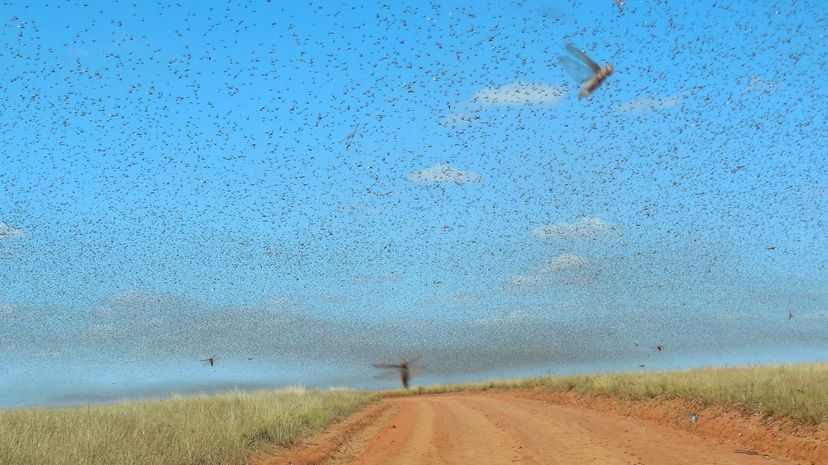
Try to picture this: in 1875 in Nebraska, there was a swarm of locusts so big it literally blocked out the sun. A doctor named Albert Child observed the swarm and calculated a rough estimate of the size based on how long it took the cloud to pass. His conclusion? A mass of about 198,000 square miles, containing 12.5 trillion locusts.
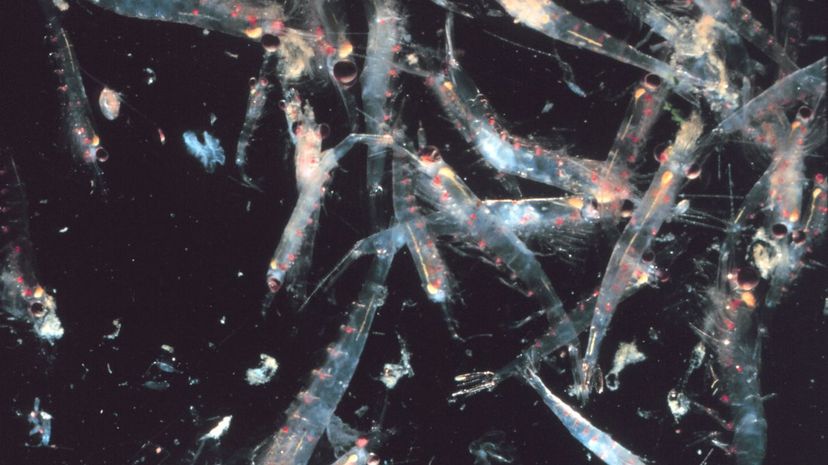
Krill are some of the tiniest crustaceans in the sea, but they form massive super swarms that can stretch not just miles across but many yards down as well. You know there have to be a lot of krill around, since they're the chief food source for massive animals like blue whales.
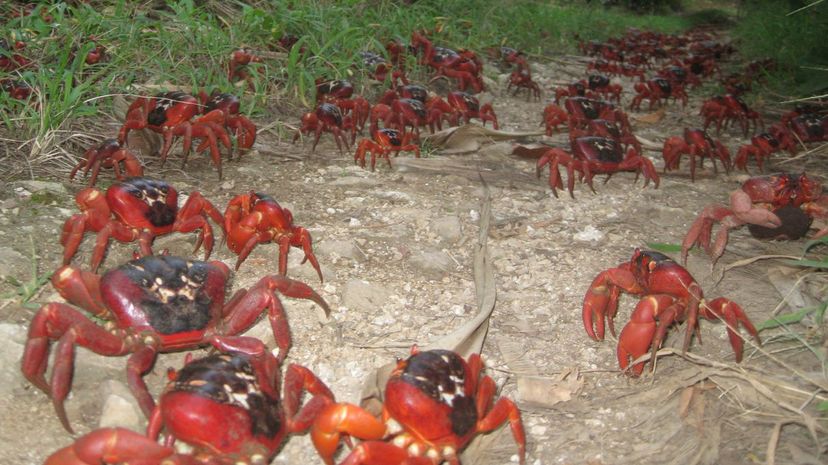
Tourists flock to Christmas island every October, November or December to watch millions of red crabs migrate from the forest to the ocean. Some crabs are eaten by birds or other predators, but many others make the journey to lay their eggs, then head back home.
Advertisement
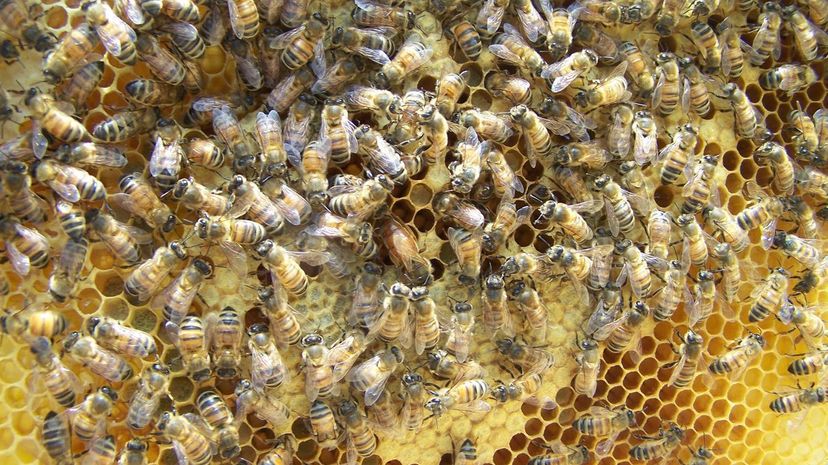
Honey bees have been cultivated by humans for centuries because we really like honey. It also doesn't hurt that bees are useful in pollinating plants. Each colony has just one queen, but perhaps 80,000 worker bees supporting it.
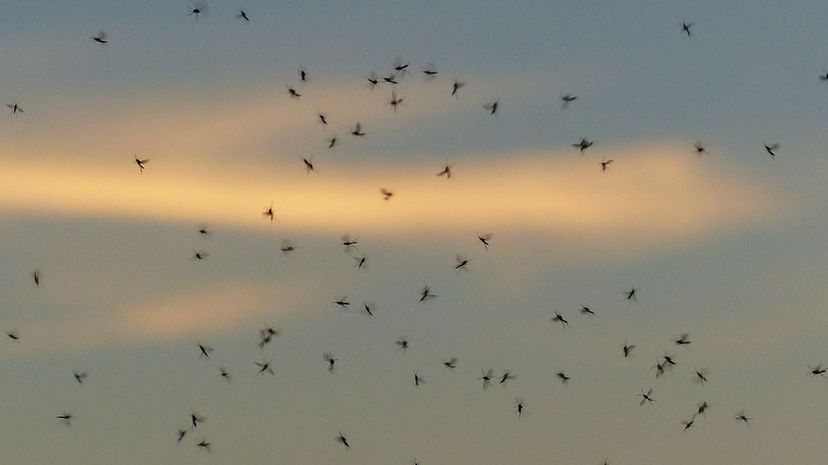
Mosquitoes tend to cluster anyplace with standing water and a warm temperature. Under the right (or wrong) conditions, they can wreak havoc. After Hurricane Florence hit the Carolinas in 2018, millions of large mosquitoes known as gallinippers swarmed the area, prompting the governor to spend $4 million to combat the scourge.
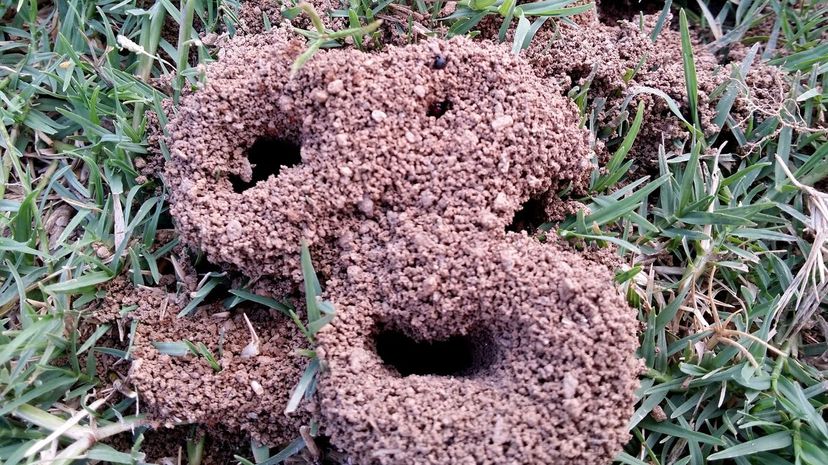
Ants live in large colonies, and most of us have seen anthills here and there. A supercolony of Argentine ants was discovered, with members in California, Japan, and Europe. They were genetically the same, despite their distance. Each colony stretched for miles; the European one was 3,700 miles long. Experts assume that human travel spread the ants so they could set up new colonies.
Advertisement
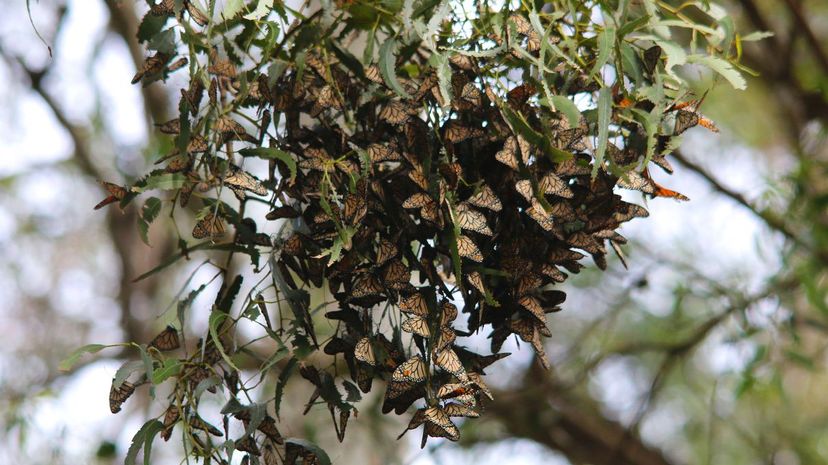
Monarch butterflies are some of the most easily recognizable and beautiful creatures. They can't handle winter weather, so every year they migrate from Canada down to Mexico and then return. Doing so involves massive groups of several million flying together, though their numbers dwindle every year.
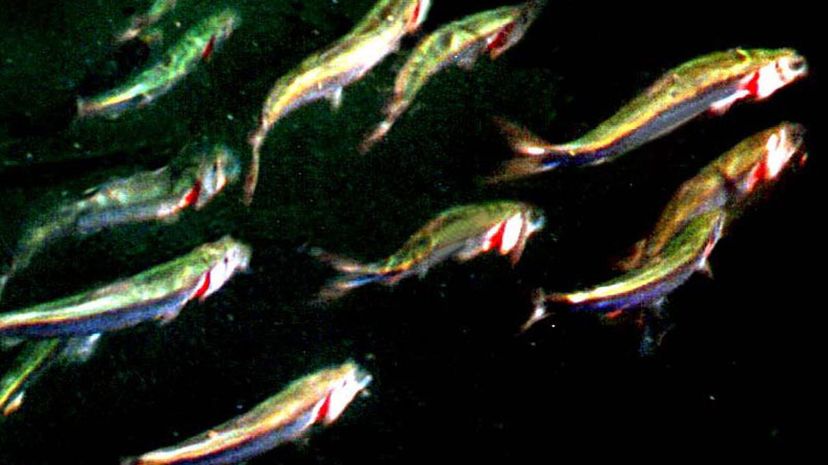
Atlantic herring are all about group work, and that's never more prevalent than when they move in mega-shoals. These massive schools of fish can extend for miles across and contain hundreds of millions of members.
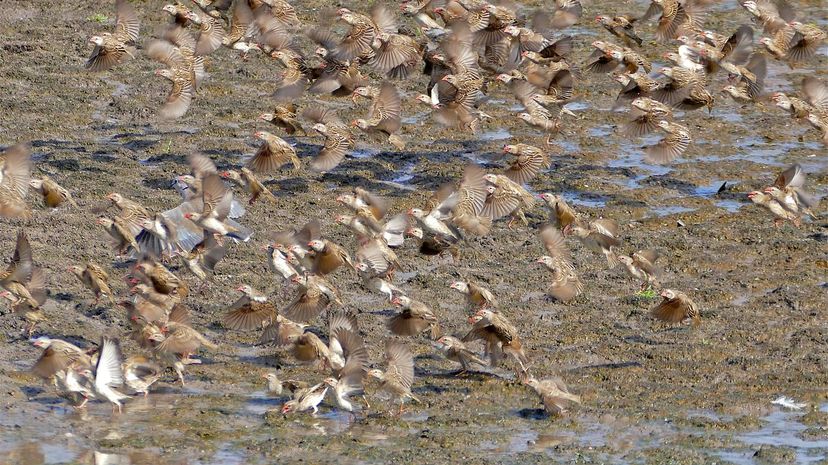
Red-billed queleas are often compared to locusts because they swarm en masse and wreak havoc on crops. Estimates suggest that they may be the most populous bird in the world, with around 1.5 billion breeding pairs at large.
Advertisement
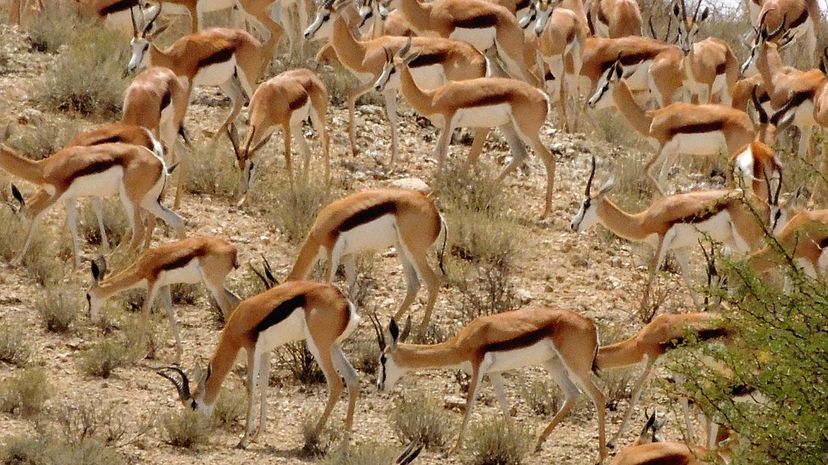
A springbok herd is the kind of sight that might make you spit out your coffee. One herd can contain tens of millions of members and stretch upwards of 90 miles long, full of jumping, bounding antelope on the move.
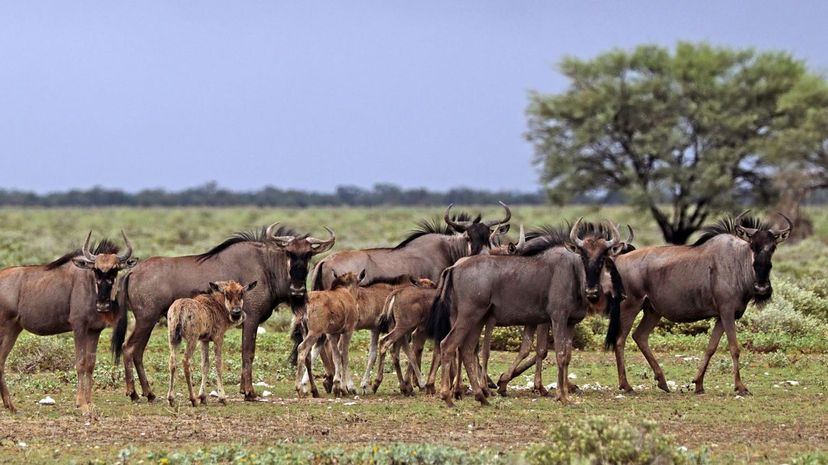
The annual wildebeest migration will see over a million of these burly beasts making their way across parts of Africa in their quest for food. A few months after the rainy season ends, usually in April or May, the herd will make its move and will stretch for miles.
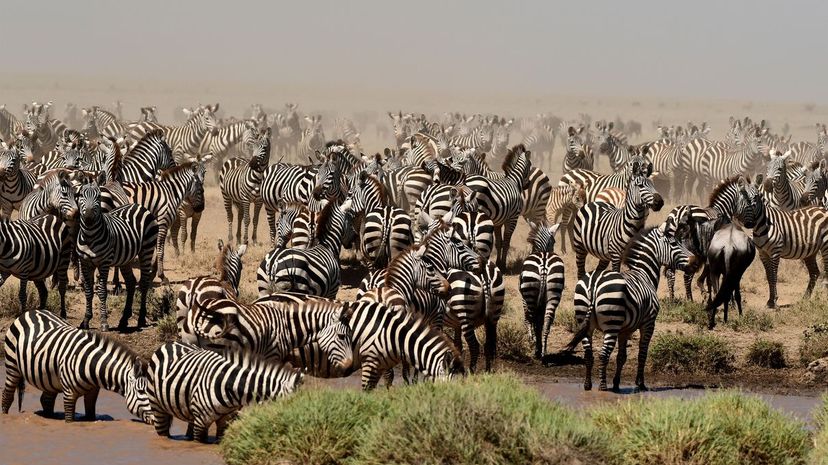
One of Africa's most easily identifiable animals, zebras live and move in massive families. A colony of 300,000 or so will migrate every year with the wildebeest herd, and other groups numbering around 20,000 will migrate elsewhere in Africa.
Advertisement
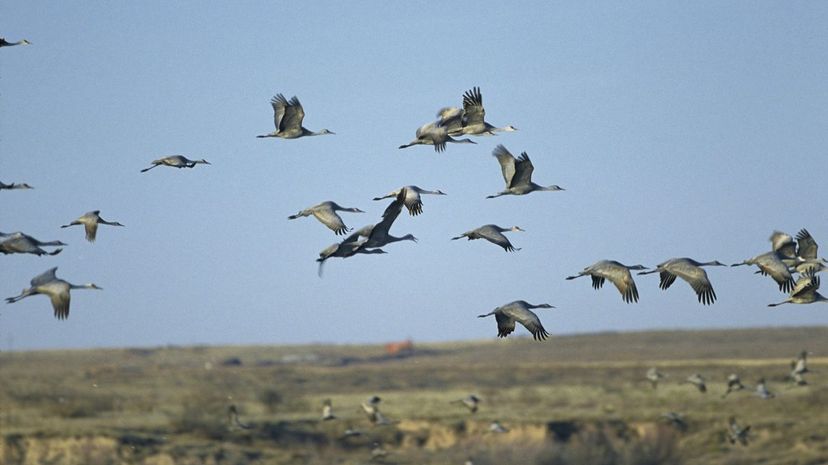
Sandhill cranes migrate north every spring, coming up from Mexico, Texas, and elsewhere along the Platte River. They'll keep heading north to Canada, and some will go further and end up in Russia.

Across Alaska and the north of Canada, you can see some immense herds of caribou if you head up to the most inhospitable reaches of the Arctic. There are several herds, ranging in size from around 20,000 individuals to around 350,000.
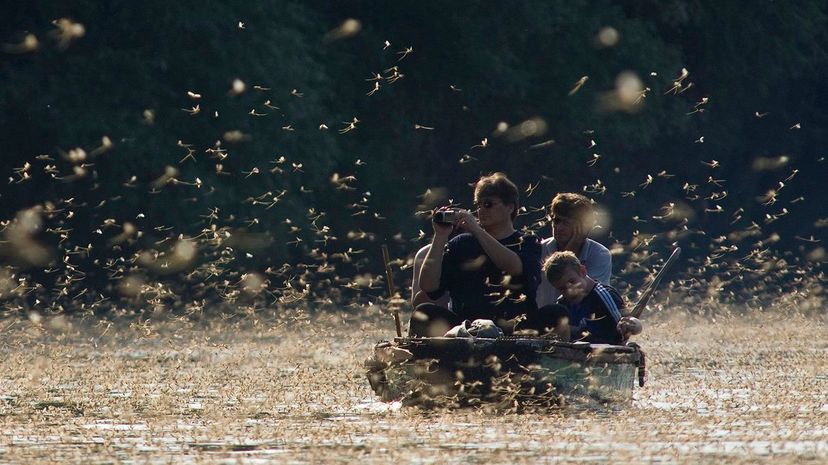
Maybe it's because a mayfly's life is so short that it doesn't have time to do much beyond swarm and reproduce. When mayflies are in season they live in groups of millions and can be seen literally blanketing every surface around them for those few days they're alive. Luckily, they're totally harmless — just a bit offputting.
Advertisement
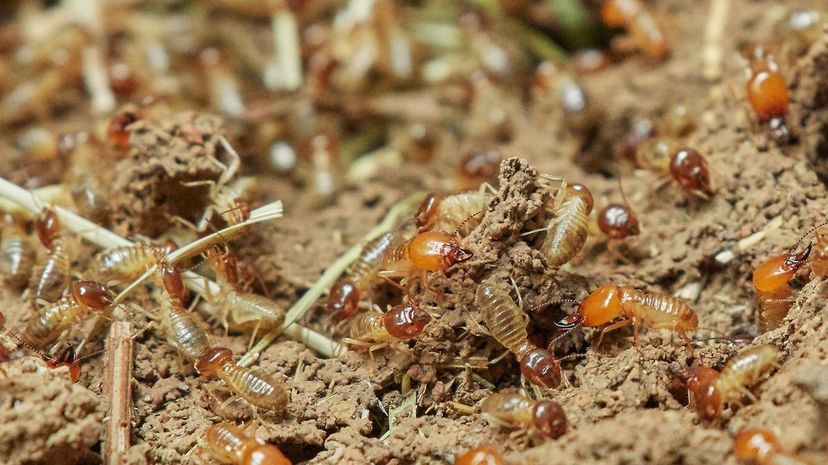
Termites are nothing if not industrious — colonies the size of the U.K. were found in Brazil that contained millions of mounds. Any given colony can contain up to 1 million termites. That's a lot of bugs.
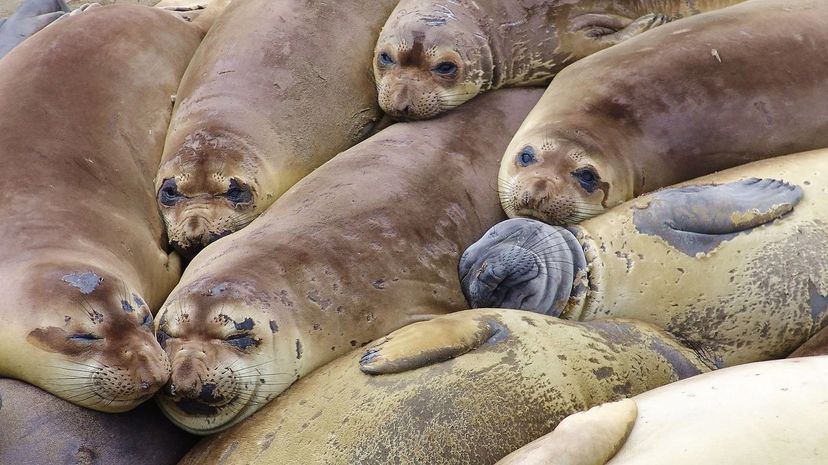
Elephant seals are big and often surly, but they do enjoy communal living. If you head to Macquarie Island in the Antarctic at the right time of year, you can see about 70,000 of these animals laid out on the ice, just living their lives.
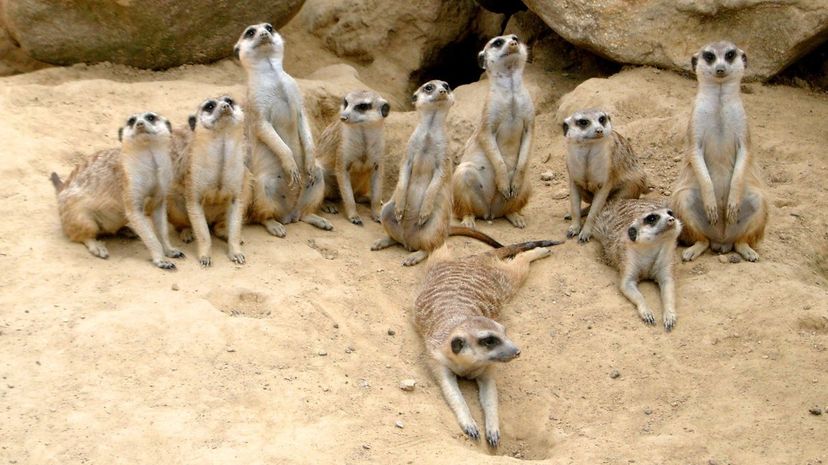
Meerkats got a serious profile boost, thanks to "The Lion King" and then later the show "Meerkat Manor." The animals live in family units with between 20 and 50 members and seem to be fiercely loyal as groups.
Advertisement
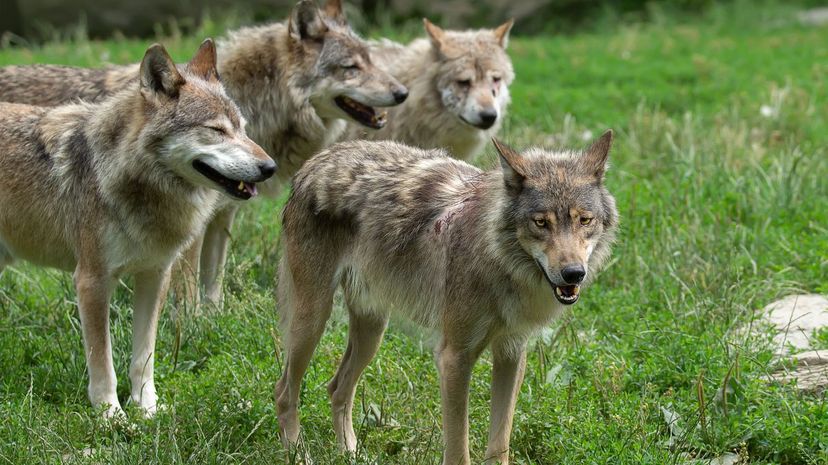
Wolves are arguably some of the most famous pack animals in the world. A typical wolf pack will have 10 to 15 members. There was a pack in Yellowstone called the Druid Peak pack that grew to nearly 40 members before being devastated by mange, and there were reports of a super pack of starving wolves in Russia with over 400 members, but that was never confirmed.
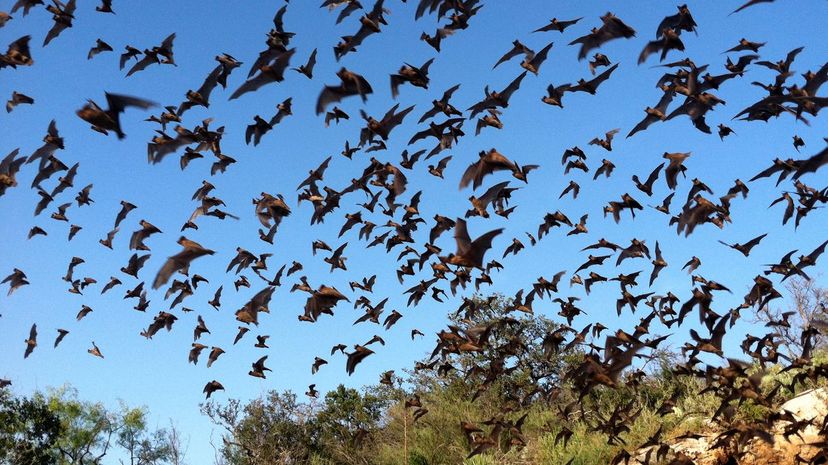
Mexican free-tailed bats move into Austin, Texas, every summer and head for the Congress Avenue Bridge. If you're squeamish around bats, you never want to visit this place, since a colony of 1.5 million of them take up residence under the bridge.
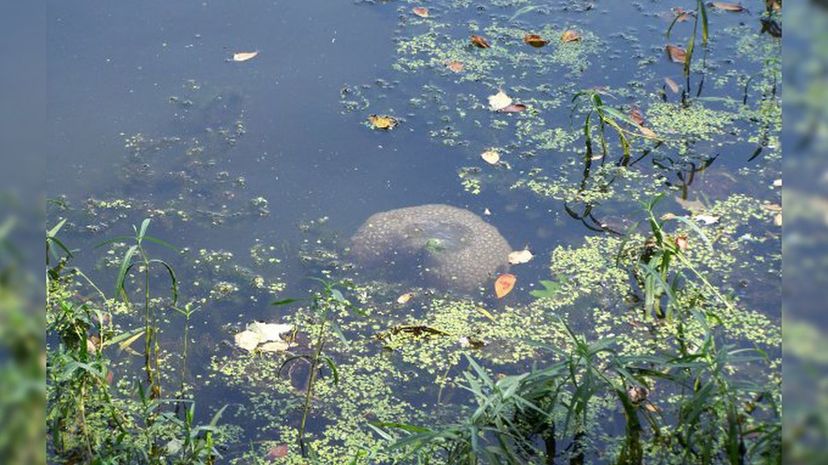
Bryozoa are microscopic organisms, and obviously, you will never notice one. Thing is, they don't like to be alone, so they will form colonies that, for microorganisms, are massive. One colony at a place called Oyster Point grew to 4 feet across and looked almost exactly like the alien eggs from the movie "Alien." It was, in fact, just millions and millions of bryozoa clinging together.
Advertisement
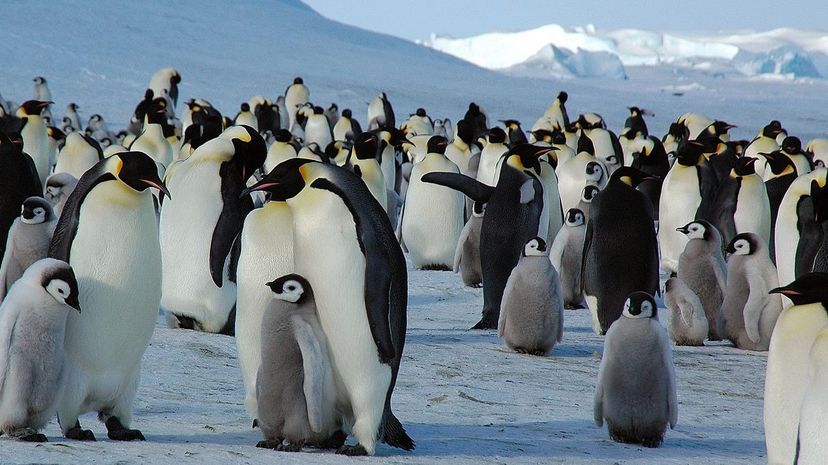
Penguins live throughout the Antarctic and are often seen just standing around on the ice in massive groups, but they'll also dive into the water and fish as large groups. There are a few dozen known colonies in the Antarctic of different species, including the large Emperor penguins.
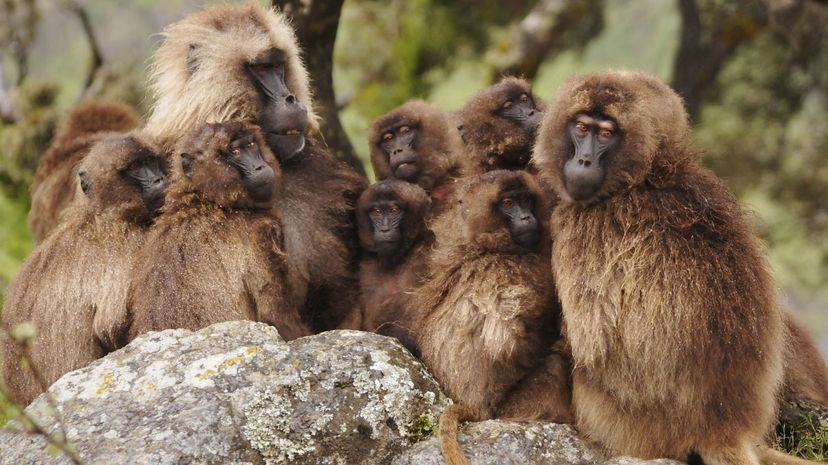
Gelada baboons live in colonies that follow various social structures. All-male groups of about 15 individuals exist, as do families with one dominant male and about a dozen or two breeding females. That said, some colonies can reach massive sizes with nearly 400 individuals, though they never last long.
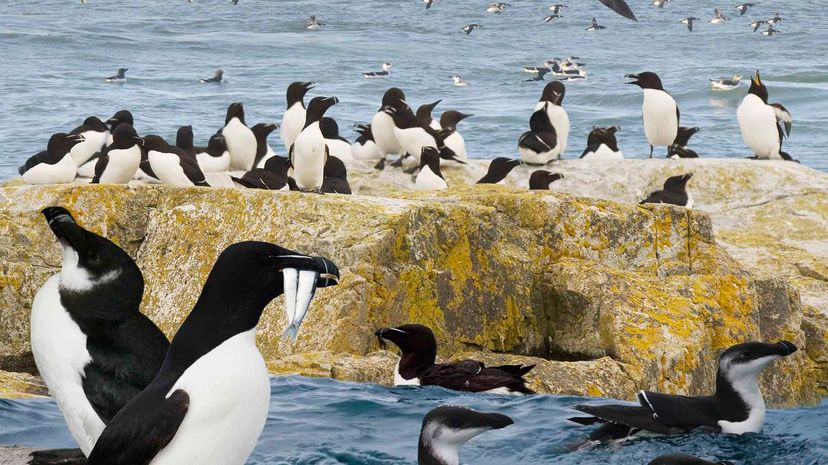
Mass quantities of razorbills, numbering in the hundreds of thousands, routinely breed and roost on cliffs in Iceland. In fact, about half of all the breeding pairs in the world can be found in Iceland.
Advertisement
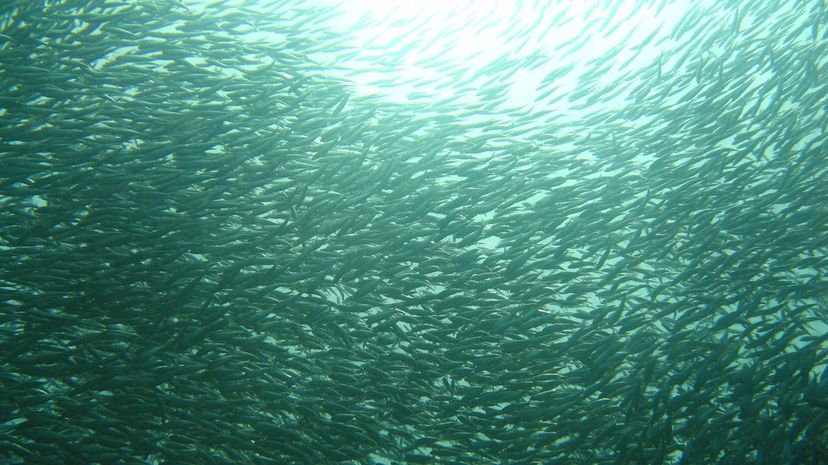
Sardines move in massive shoals that attract predators, including sharks and dolphins. The shoals can be over 4 miles long, about 1 mile wide and nearly 100 feet deep. The whole point is that, in a group that size, at least some will be protected, even though many more will be eaten.
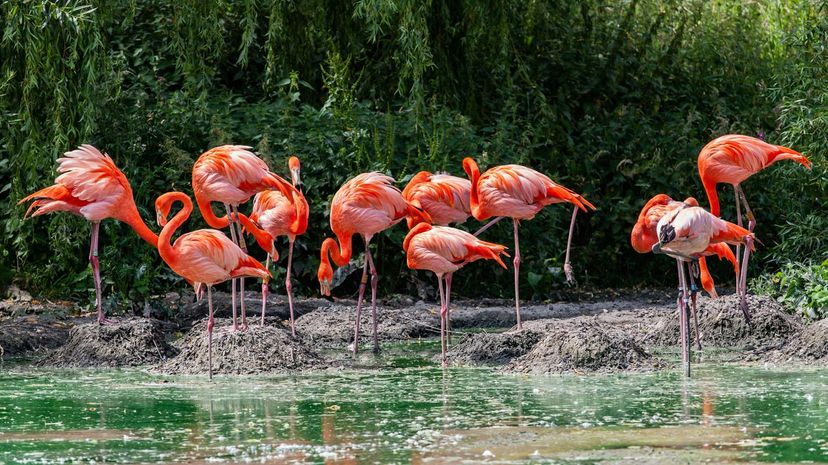
Head to Lake Natron in East Africa, and you'll discover a massive colony of flamingoes that numbers around 2.5 million. It's the only breeding grounds for lesser flamingoes in Africa, and the lake is so alkaline that it protects them from predators.
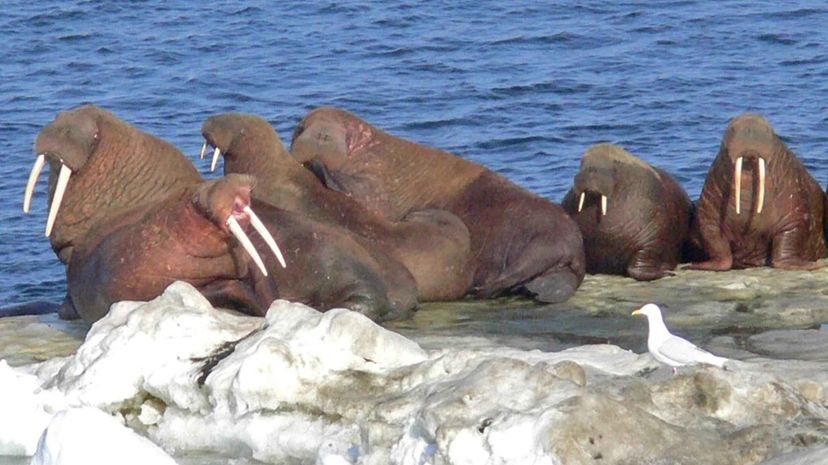
Walruses are very social animals and generally gentle, though they can be highly aggressive to humans if threatened. The Foxe Basin herd in Canada has about 5,000 members. Male walruses can grow to over 3,000 pounds.
Advertisement
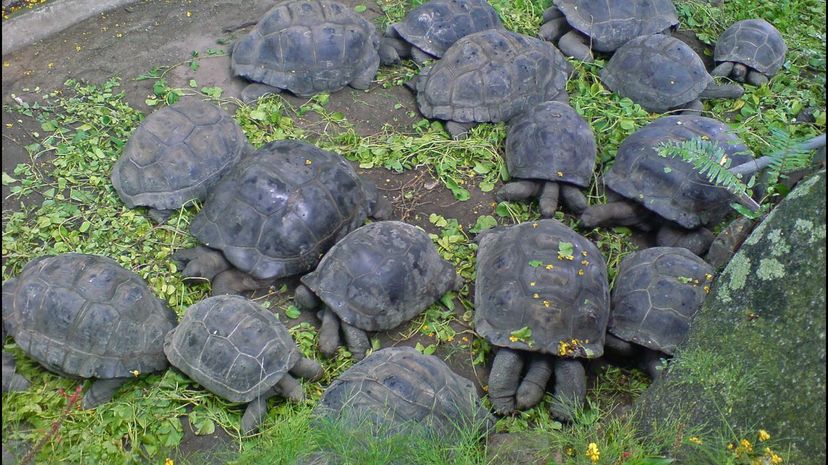
The Aldabra tortoise comes from the Aldabra Atoll in the Seychelle Islands. Their habitat is protected, and as such, a massive colony of tortoises thrives there, about 100,000 strong.
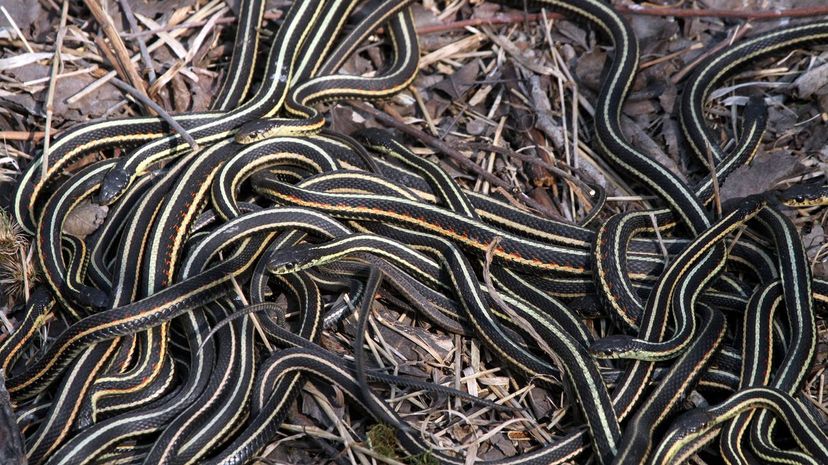
The Narcisse snake dens in Manitoba, Canada, are home to tens of thousands of red-sided garter snakes that spend every winter there. Special tunnels have been built under the nearby highways so the snakes can migrate away in spring and avoid cars.

The thing about cats is that they like to have company, and feral house cats will group together into colonies when they get the chance. Aoshima Island in Japan is home to about 120 feral cats and only a handful of humans.
Advertisement
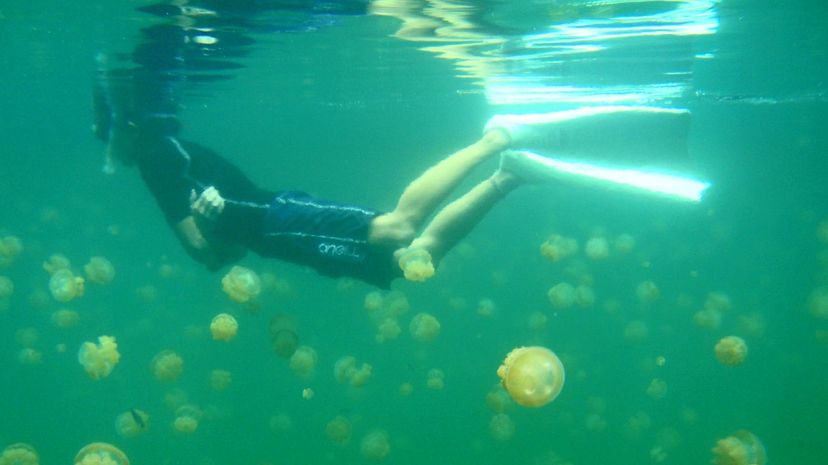
The appropriately named Jellyfish Lake on Eil Malk Island in Palau is not particularly big — it covers about 14 acres — but it's home to millions and millions of jellyfish. The main species in the lake are golden jellyfish, but there are also moon jellyfish. They swim back and forth across the lake in a daily migration, following the sun.
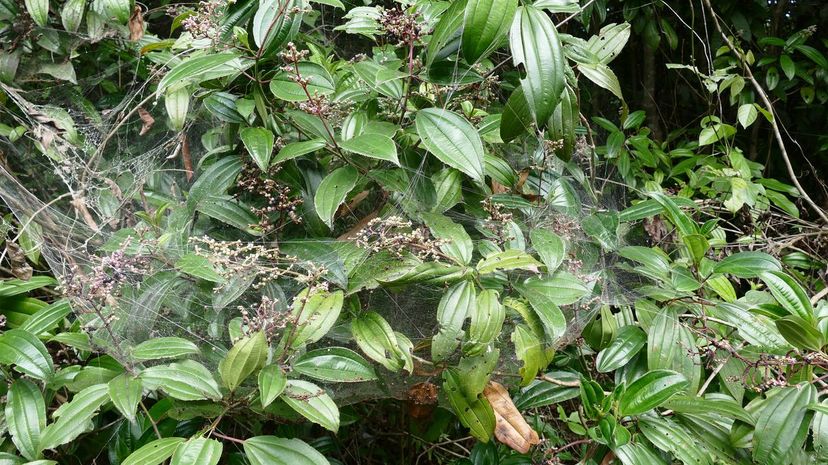
No one gave poor Anelosimus eximius a common name, which is weird since they're so socially developed. This is a species of social spider that lives in colonies that can grow to include up to 50,000 spiders in webs 25 feet long and 5 feet wide.
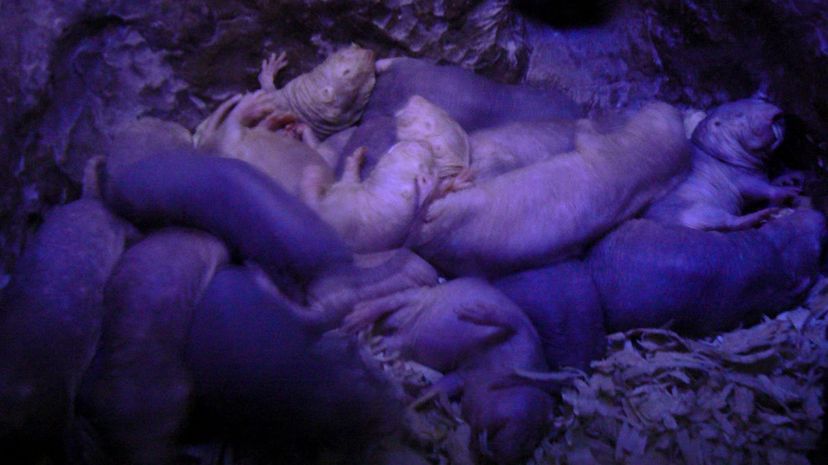
Naked mole-rats live in underground colonies that can range in size from only 20 members to as many as 300. They feed on roots they find during their tunneling. The colony takes care of its one breeding queen.
Advertisement

Capybaras are semi-aquatic mammals and the largest rodents in the world, weighing as much as 150 pounds. They are naturally social, living in groups that may include up to 40 members.
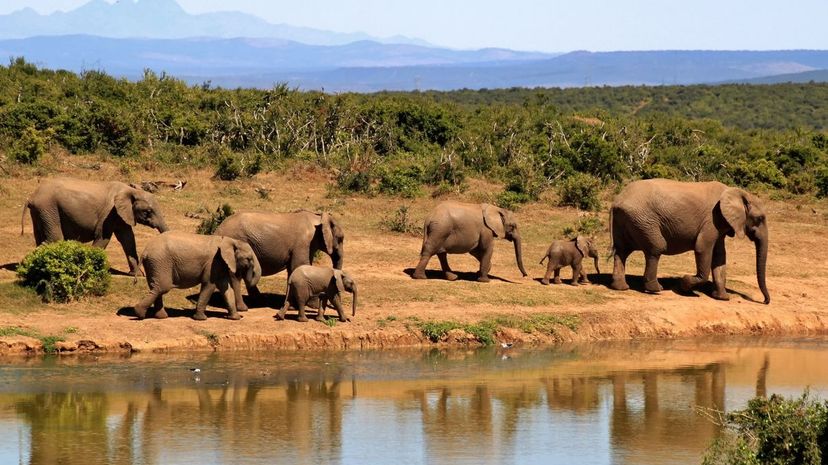
Elephants are known to be pretty social animals that travel in family groups. In Hwange National Park in Africa, these herds can grow to incredible size, with some numbering up to 350 individuals.
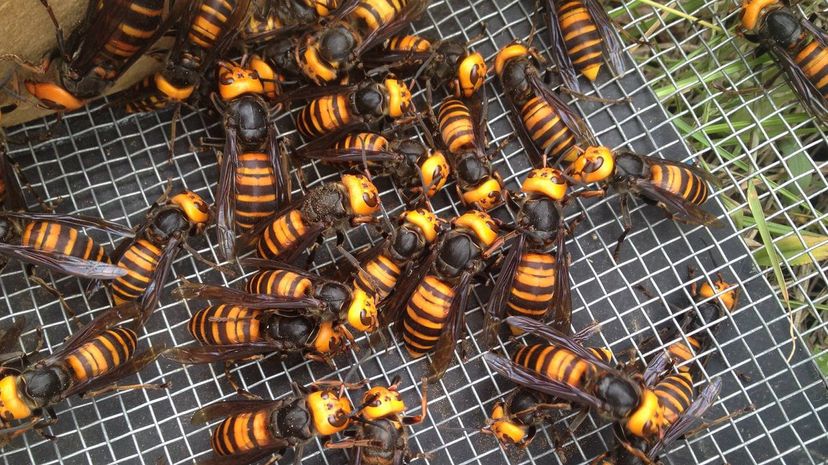
Japanese giant hornets are some of the most dangerous insects in the world. Like bees, wasps and regular-sized hornets, they live in nesting colonies. The Japanese giant hornet's sting is incredibly painful and can cause severe reactions in humans, including cardiac arrest.
Advertisement
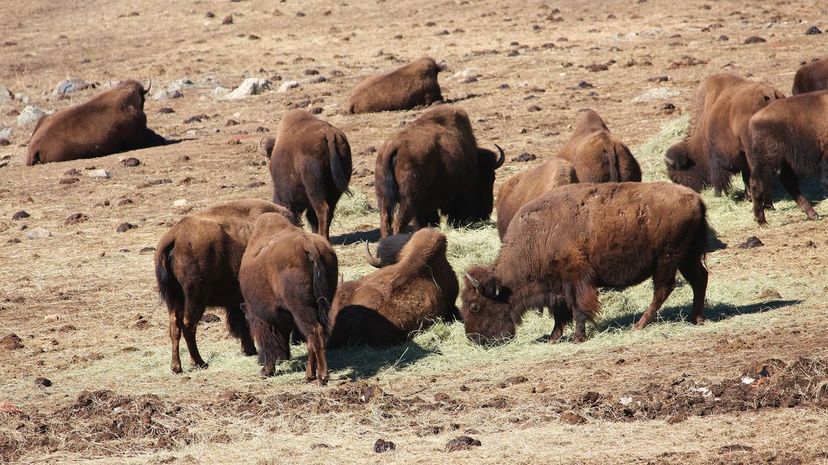
Herds of bison used to roam all over North America, but many were killed off years ago. Now some of those herds are slowly being rebuilt. The herd that lives in Yellowstone Park currently includes at least 5,000 members.
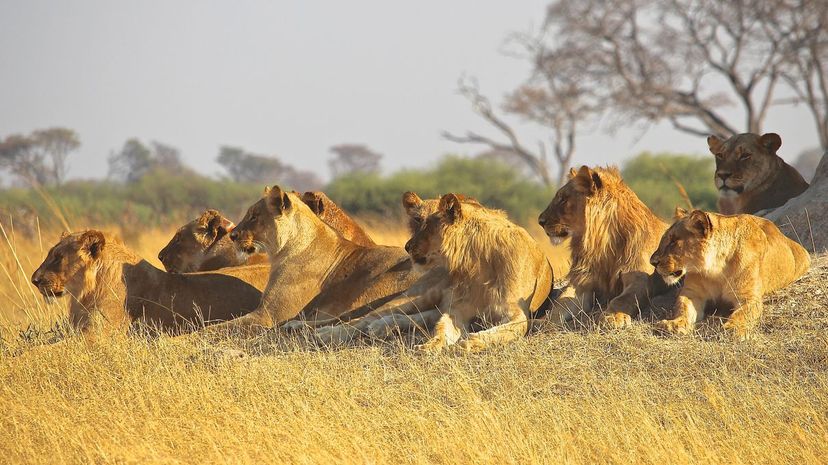
Lions live and hunt in a group called a pride. In Serengeti National Park in Tanzania, there's at least one superpride of 22 members, while a typical pride has only around 15 or so lions.
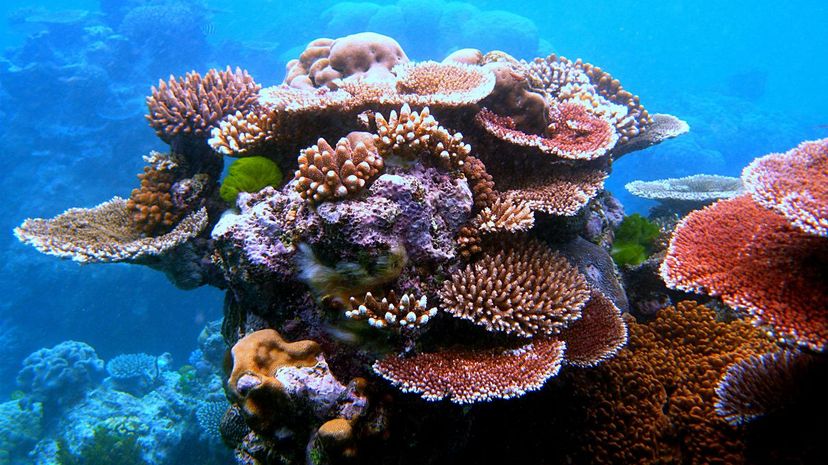
Coral may look like a rocky outgrowth under the sea, but it's actually living organisms that grow into huge colonies. One such colony in American Somoa contains about 200 million individual coral polyps.
Advertisement

The Portuguese man o' war isn't a jellyfish, even though it resembles one. It's actually something called a siphonophore. Each creature is a group of four specialized polyps that work together symbiotically, doing different tasks for the benefit of the whole.